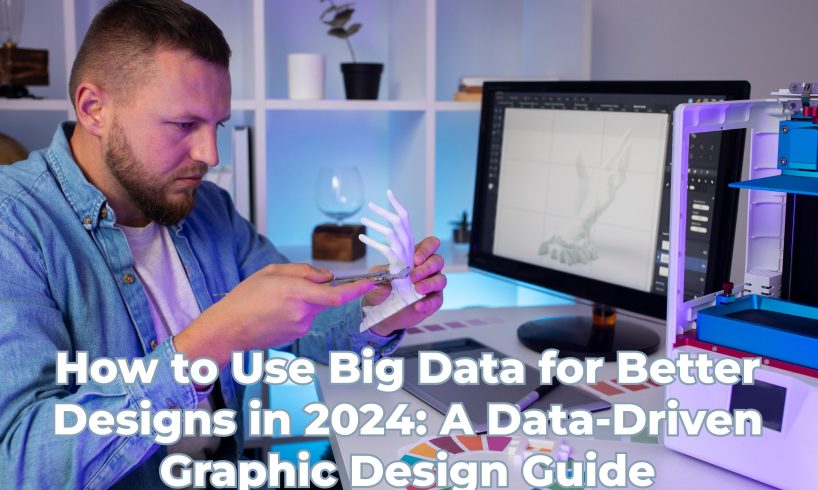
In 2024, harnessing big data for graphic design isn’t just a trend—it’s a game-changer. Designers today have access to unprecedented amounts of data that can inform and elevate their creative processes. Whether you’re a seasoned designer or just starting out, integrating big data into your workflow can significantly enhance the effectiveness and impact of your designs.
Understanding Big Data in Graphic Design
Big data refers to the massive volumes of structured and unstructured information that organizations and businesses collect every day. This data can come from various sources, including social media, website analytics, customer feedback, and market trends. In graphic design, big data provides valuable insights into consumer behavior, preferences, and trends, which can inform design decisions and strategies.
Step 1: Leveraging Data for Design Inspiration
One of the most powerful ways to use big data in graphic design is for inspiration. By analyzing trends and patterns in consumer data, designers can identify what resonates with their target audience. For example, analyzing social media trends can reveal popular colors, styles, and themes that are currently trending among your demographic.
Step 2: Personalizing Design Experiences
Personalization is key to effective design in 2024. Big data allows designers to create personalized experiences by tailoring visuals to individual preferences and behaviors. For instance, e-commerce platforms use data to recommend products based on previous purchases, browsing history, and demographic information. Similarly, designers can customize graphics and layouts to align with specific user preferences, enhancing engagement and satisfaction.
Step 3: Optimizing Design Performance
Data-driven design isn’t just about aesthetics; it’s also about performance. By analyzing metrics such as click-through rates, conversion rates, and bounce rates, designers can optimize designs for better performance. For example, A/B testing different design variations can help identify which layout or visual elements resonate best with users, leading to improved outcomes and higher ROI.
Step 4: Enhancing User Experience (UX)
User experience is a critical aspect of modern graphic design. Big data enables designers to gain deep insights into user behavior and preferences, allowing them to create intuitive and user-friendly interfaces. For example, analyzing heatmaps and user session recordings can reveal pain points in the user journey, enabling designers to make informed improvements that enhance usability and satisfaction.
Step 5: Staying Ahead with Predictive Analytics
In 2024, predictive analytics plays a crucial role in anticipatory design. By analyzing historical data and trends, designers can forecast future preferences and behaviors, enabling proactive design decisions. For instance, predictive analytics can help anticipate seasonal trends or predict emerging design preferences, giving designers a competitive edge in the rapidly evolving design landscape.
Step 6: Ethical Considerations in Data-Driven Design
While big data offers immense potential for enhancing design practices, it’s essential to navigate ethical considerations responsibly. Designers must prioritize user privacy and data security, ensuring compliance with regulations such as GDPR and CCPA. Transparency in data collection and usage is crucial to maintaining trust and credibility with users.
Step 7: Collaborative and Iterative Design Processes
Big data facilitates collaborative and iterative design processes in 2024. Design teams can leverage real-time data insights to collaborate more effectively, iterate designs based on user feedback, and make data-driven decisions throughout the design lifecycle. This iterative approach fosters creativity, innovation, and continuous improvement, ensuring that designs meet evolving user needs and business goals.
Step 8: Embracing Diversity in Data Sources
Diverse data sources enrich the design process by providing comprehensive insights into different aspects of user behavior and market trends. Designers can integrate data from social media platforms, customer surveys, website analytics, and sales data to gain a holistic understanding of their audience. This multidimensional approach helps designers create inclusive and impactful designs that resonate across diverse demographics and cultural contexts.
Featured Image Credit: Freepik






